Organists are horribly dependent on the generosity of others when it comes to their instrument. Eye-watering amounts of money have to be found when organs need an overhaul. So we’re always grateful to organisations who see the importance of funding pipe organ projects – particularly if we can enjoy playing the result.
One of the rather good benefits which comes along with my membership of the Royal College of Organists is that I’m allowed to practice for free in the Grand Temple of the United Grand Lodge of England at Freemasons’ Hall, and now I’m in London half the week, I’m taking advantage.
Freemasons’ Hall is a Covent Garden landmark, built between 1926 and 1933 and originally named the Peace Memorial Building to commemorate the three and a half thousand Freemasons killed in the first World War. The organ set in the Art Deco splendour of the central Grand Temple was built by Henry Willis III (himself a Freemason), but he was given two impossible small triangular chambers for the pipework, behind two cases which basically shouted at each other across the dais. This, combined with three large curtains across the back wall, conspired to make the organ sound disappointing, tending towards inaudible, for anyone sitting at the back of the hall.
To mark a Masonic bicentenary in 2013, the Committee of General Purposes decided to ask Harrison & Harrison to undertake a needed renovation, and to add a new central case with a further 400 pipes to enhance the sound. A budget of £1m was approved, half of which went on the new central case and pipes. The pointless curtains were removed, and the result you can see below – the elegance and logicality a tribute to H&H’s craftsmanship and that of the architects, engineers, gilders, joiners, carvers, and french-polishers who worked alongside them.
Charles Grace, now Organ Curator, volunteered as Project Manager in 2013, little knowing quite how this would dominate the next two years of his life. ‘There were some difficult moments, like when a hidden main joist of the building was almost severed when we were installing the new blowers,’ he said. ‘And the steel structure to support the 2.5 tonnes of the new case wasn’t installed perfectly upright, and had to be re-welded to meet H&H’s exacting requirements.’ He was relieved to complete this complex project on time – on 24th April 2015, ready for Investiture ceremonies five days later.
Sit at the console, press the ON button, and a blower the size of a small car in the room under your feet lifts the great machine, creaking slightly, to life around you (though this is insufficient to power the Grand Tuba, which has its own blowing arrangements). H&H removed the nasty gold paint from the console exterior to reveal the 80-year-old Brazilian mahogany beneath: the controls inside have been replaced with solid-state electronics, though all the original Willis mechanisms have been restored and reinstated.
Parry and Elgar play themselves on this instrument, and the temptation to play Bach in the grand Edwardian style is almost irresistible. Suddenly all the struggles and disappointments on the road to becoming an organist don’t matter: for the privilege and pleasure of being able to sit at an instrument of such complexity, size and craftsmanship, and, heck, knowing how to play it.
Organists get used to practising in cold and uncomfortable surroundings, with slightly haphazard management and no toilet facilities: so you know what? – part of the pleasure of playing here is the warmth and comfort of the building, and the professional staff who look after you. I emerge into the Covent Garden streets, after two hours of happy absorption, feeling very sorry for anyone who is not an organist.
Charles says the Freemasons are keen for the organ to be seen and played – part of the outreach and openness they are trying to foster. Their collaboration with the Royal College of Organists includes free practice facilities as one of the benefits of RCO membership: see membership benefits here.
Freemasons’ Hall is in Great Queen Street, London WC2. To practise, you have to book in advance (by email) to fit around events taking place in the Temple. If the Grand Temple is occupied, or if you would rather not be disturbed (guided tours come round from time to time) then a recently installed three-manual Viscount Regent Classic digital organ is also available to book, in the smaller (by comparison) Temple 10.
Recitals are given on the Grand Temple organ by top organists several times a year. There’s an account of the opening recital on the restored organ, by Thomas Trotter, on Viscount Organs blog, and the new specification can be found on NPOR.

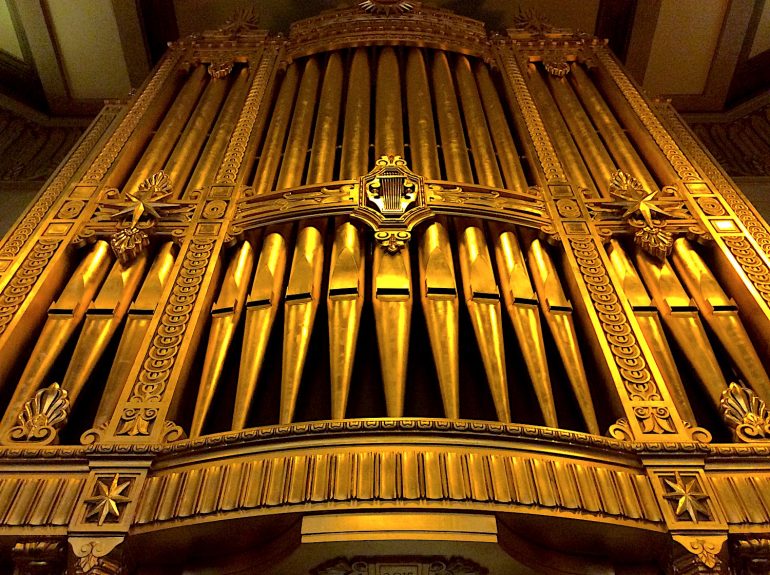
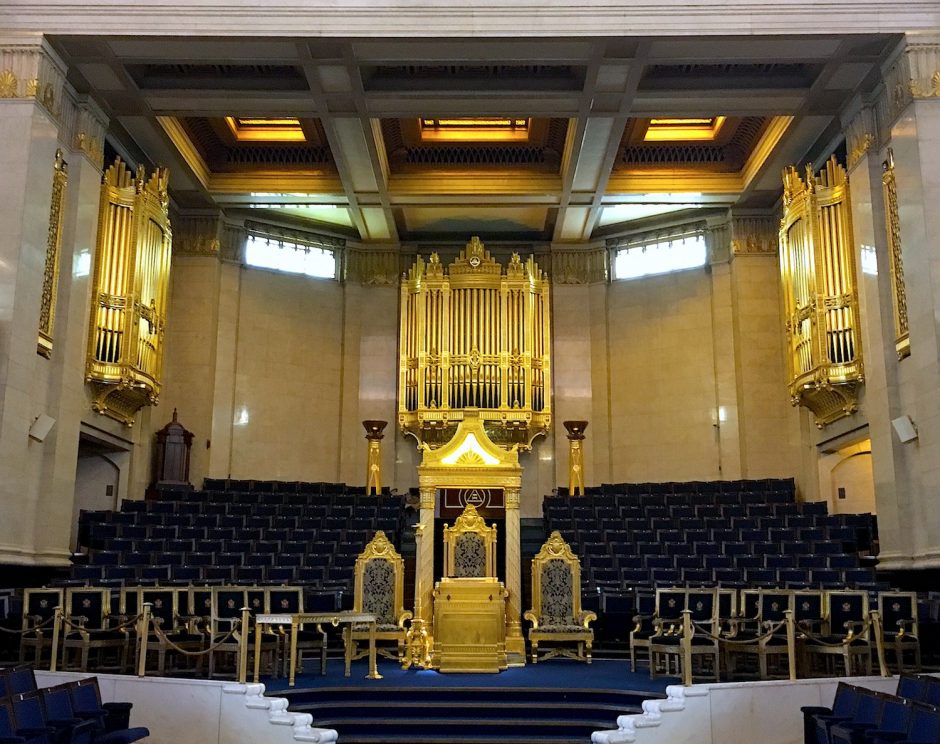
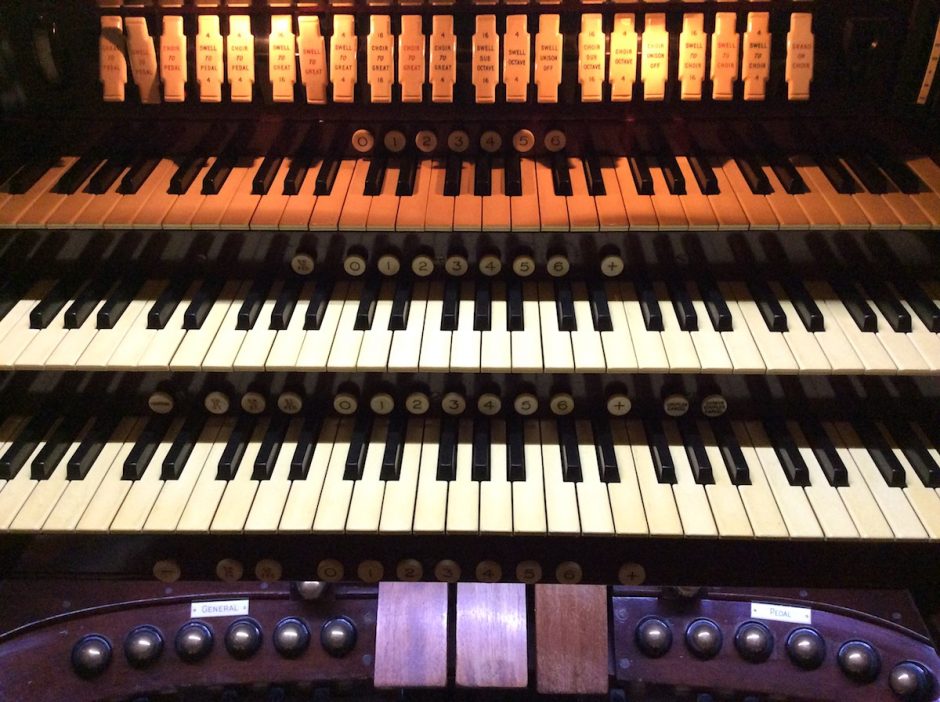
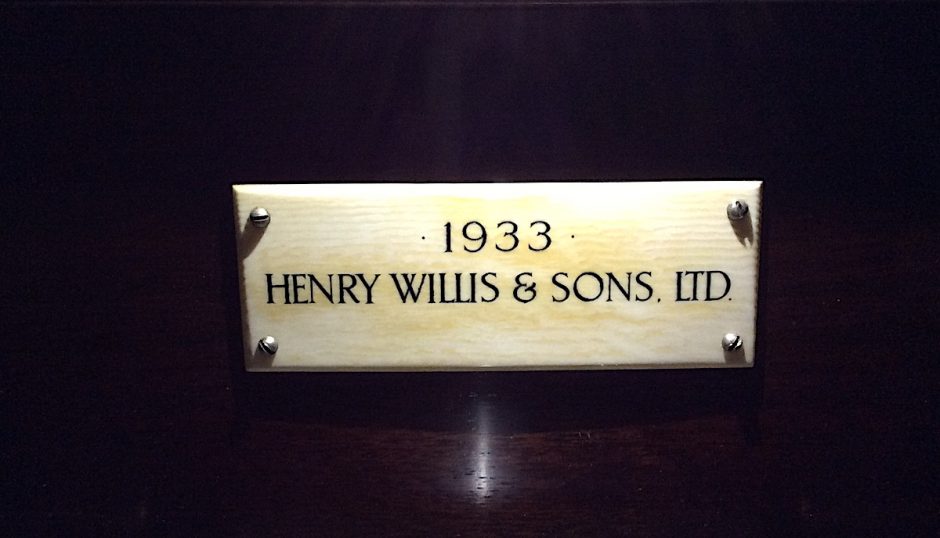
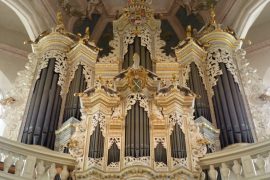
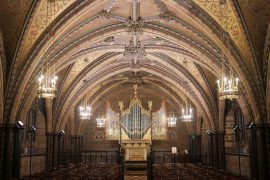
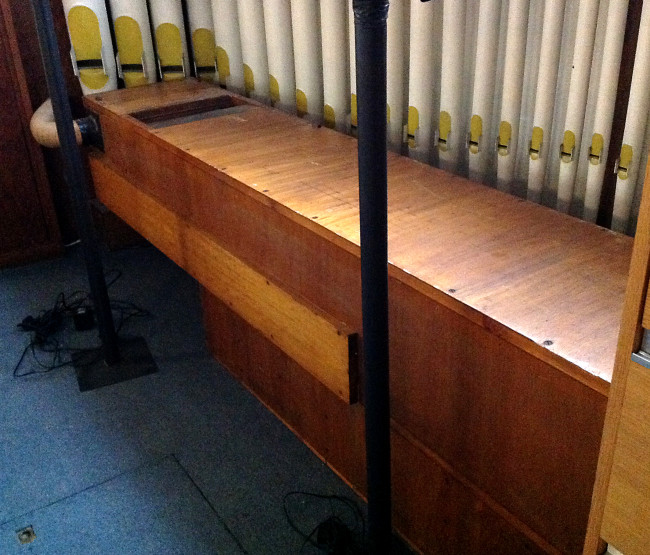
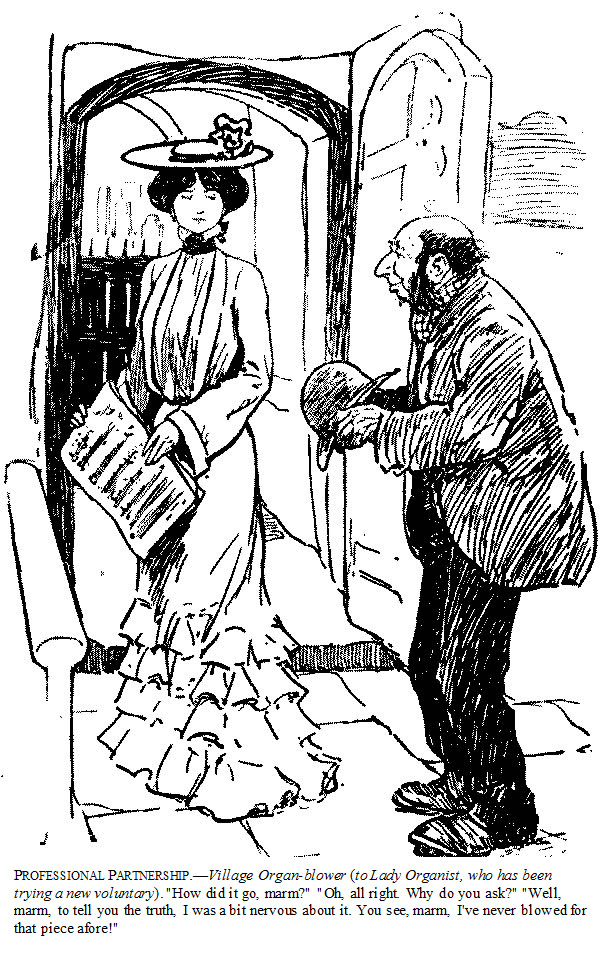
Having just read this article and being a Freemason in Bradford on Avon in the Province of Wiltshire I was delighted to have it passed on to me from the Musical Director at our Parish Church, Holy Trinity. We have a Willis Organ at Holy Trinity and recently our Lodge attended Evensong as part of our 150th Anniversary . Everyone was delighted with the output from the Willis Organ and the skills of the Organist Martin Cooke
Like the Grand Temple organ the organ at Holy Trinity, Bradford on Avon was magnificently restored and re-positioned by Harrison & Harrison in 2017. The result is fantastic.
The organ was built in 1926 and had one of the first Pitman Chest actions in the country. Like the Grand Temple instrument it was badly situated and the choir organ was never heard to advantage. The Pitman chest action was removed about 30 years ago and was not re-instated at the restoration. The trials inflicted on this action fill two fat wallet files and include extreme variations in the relative humidity; draughts; ‘vermin’ attacking the felt and mice eating the leathers, a problem, that neither mouse traps nor the church cat could solve. All this probably contributed to the decay of the leather purses necessary to the action whose life-span fell far short of the expected 50 years.